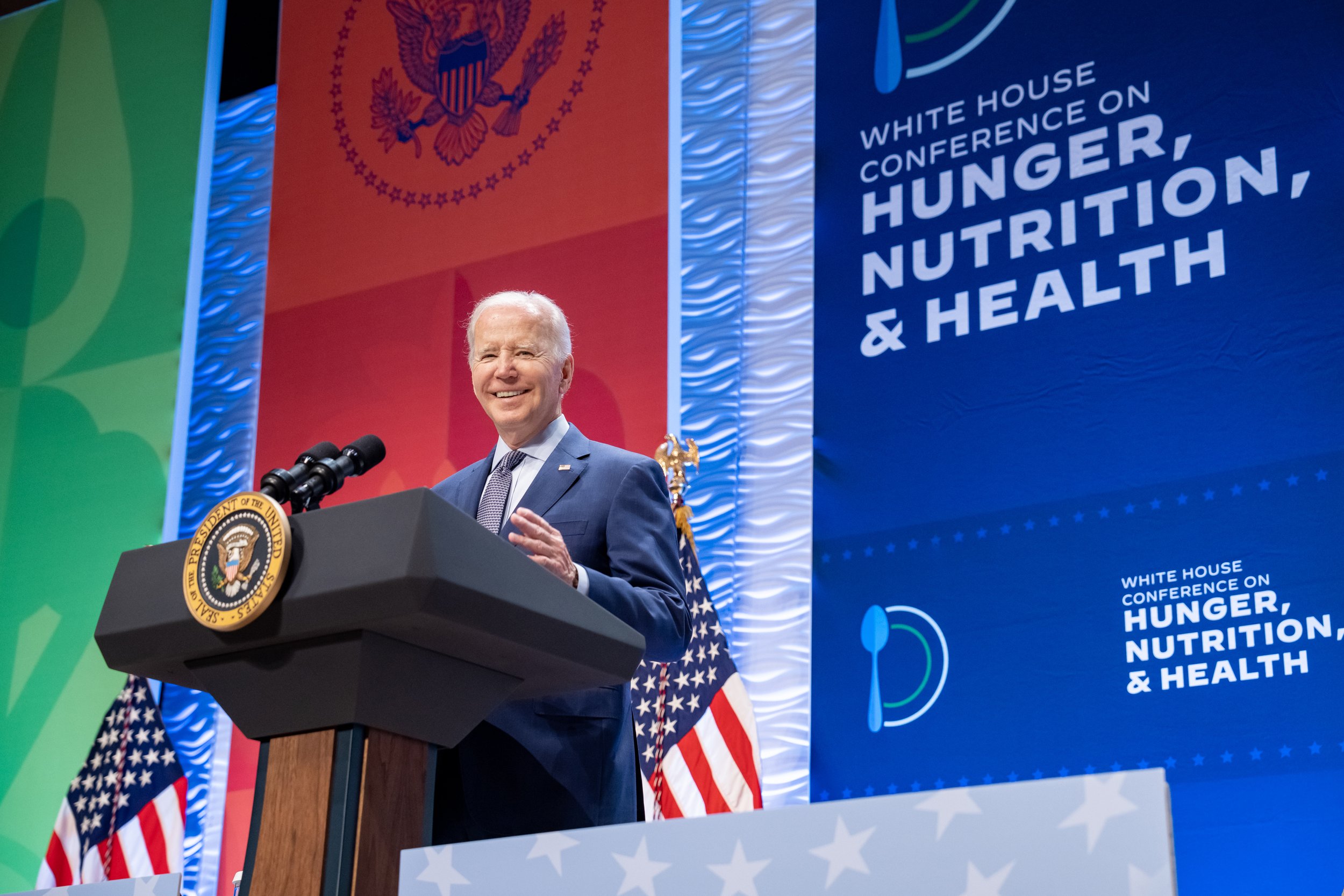The White House Game Plan to Combat Hunger in America, Improve Health and Nutrition
At the first White House Conference on Hunger, Nutrition, and Health in over 50 years, President Biden reaffirmed his commitment to ending hunger and reducing diet-related diseases in the United States by 2030 (Official White House Photo by Adam Schultz).
In addition to accessibility, the strategy aims to provide medically tailored meals in Medicare, plus testing Medicaid coverage of nutrition education to help patients resolve conditions through nutrition.
Article by Alex Zimmerman, Chief Sports Anchor
WASHINGTON - The Biden Administration hosted the first Hunger, Health and Nutrition Conference on September 28th in an effort towards improving the well-being of Americans. Coming out of the event, the Administration shared a National Strategy to serve as a playbook for executing on President Biden’s goal to end hunger and increase physical activity and healthy eating by 2030. More than $8 billion in private and public sector commitments have been dedicated to reaching the goal to end hunger.
The initiatives to come from the conference are based on 5 main pillars:
Improve Food Access and Affordability
Integrate Nutrition and Health
Empower All Consumers to Make Healthy Choices
Support Physical Activity For All
Enhance Nutrition and Food Security Research
“Food as medicine” is a concept supporting many of the National Strategy initiatives, as it signifies the importance of nutrition in disease prevention. President Biden spoke to the impact that a healthy lifestyle has on children’s performance in the classroom as well as disease prevention for all Americans. One of the biggest priorities in the Strategy is accessibility, which is a major hurdle to overcome for many Americans experiencing food insecurity.
The White House stated that 1 in 10 households experienced food insecurity in 2021, meaning they had to skip meals or could not afford food regularly. Trends have shown that when food insecurity is high, accessible foods are not nutritionally sound and can lead to disease in the long run.
The first pillar of the National Strategy involves leveraging Health and Human Services to enable more food-insecure households to have access to SNAP, EBT and more programs. Access to food ties directly back to economic health and income status, and the Biden Administration plans to push congress to raise the minimum wage to $15 and permanently extend the Child Tax Credit through the American Rescue Plan, amongst other initiatives.
Helping more people benefit from federal assistance will require:
Expanded access to SNAP and similar programs, including to previously incarcerated individuals who currently aren’t eligible
“Healthy Meals for All” - Free school lunches for 9 Million children by 2032
Expand Summer EBT to more children
The cumbersome nature of many government program processes is a barrier to utilization of the current offerings. Modernizing federal programs to empower Americans to sign up and take advantage of various programs will be key for enabling accessibility.
In addition to accessibility, the strategy aims to provide medically tailored meals in Medicare, plus testing Medicaid coverage of nutrition education to help patients resolve conditions through nutrition. Empowering consumers to choose the right foods is part of the White House plan, which includes piloting new front package nutritional labels. This is one of the biggest packing and consumer good changes to come, should it be implemented.
Efforts to enable people in underserved communities to have access to better outdoor spaces is equally as important, while pledging to improve Physical Activity Guidelines for Americans.
To read more detail about the other pillars in the National Strategy for Hunger, Health and Nutrition, head to the conference page on Health.gov.
